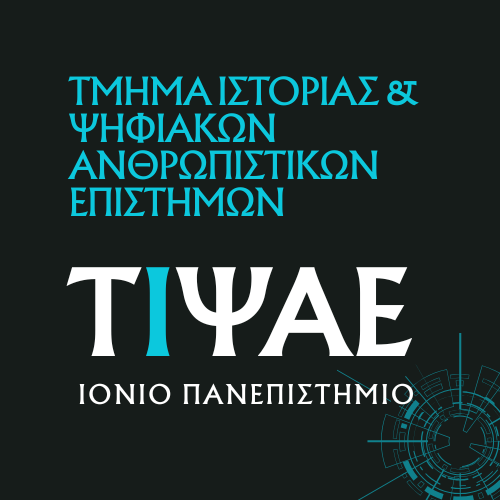HISTORY OF MODERN GREEK ART 18th-20th CENTURY
Teaching Staff: Palioura Mirka
Course Code: ΑΙΤ102
Course Type: Compulsory Elective
Course Level: Undergraduate
Course Language: Greek
Semester: 7th
ECTS: 5
Curricula: Curriculum in History up to 2024-25, Curriculum in History and Digital Humanities from 2025
This course offers a critical review of the artistic production at the Ionian islands and the sovereign Greek state, with special emphasis on painting. The primordial issues that arise have to do with the Greeks violent detachment from the cultural developments in early modern Europe after 1453, their minimal experience of the Renaissance and Baroque revolution and the suffocating attempt of the painters of the academic School of Munich to swiftly fill in these gaps during the 19th century. Τhe manipulating dilemma «Greekness or innovation» was constantly posed during the centuries under scrutiny, thus determining the unsecure aesthetic developments in our country, at least until its fair entrance to the international art scene as an equal partner in the postmodern era.
After the successful completion of this lecture circle, the students should be able to grasp and pinpoint the underlying connections between the historical developments of the last two centuries with sixty featured artworks and their wider background. The prototypes of these paintings and statues (European, classical, medieval) and well-known literary/theatrical pieces are used as importance reference points that help to anchor them within an expanded, yet insufficiently known cultural context (regional art in Southern Europe). Through this process, the critical and comparative faculties of the students are being developed, along with their ability to use the techniques introduced in last year’s core course (formal/stylistic analysis, iconographical analysis, historical/social analysis and semiotical/intertextual reading).
Week One: The enslaved Greek communities and their artistic production. Cases of fertile contact between the post-byzantine and the Renaissance/Baroque manner.
Week Two: Art in the Ionian islands (1700-1815): The Doxaras family of painters, Plakotos, Korais, Koutouzis, Kantounis.
Week Three: Art in the Ionian islands (1815-1870): Prosalentis, Pitzamanos, Kallivokas, Iatras, Avlichos, Pachis.
Week Four: Art in the first decades of post-Revolutionary Greece α) Ηess and court art under Otto I β) Pige-Krieziz-Thiersch: the face of the new, local high society γ) The romantic mythology of 1821: Tsokos-Margaritis-Vryzakis. δ) Public sculpture (1840-1860).
Week Five: The art of the ambitious Trikoupis era α) From romantic history painting to genre and symbolist painting: Lytras, Volanakis, Gysis β) Public sculpture and the introduction of monumental naturalism (Κossos, Fytalis, Drosis)
Week Six: Progressive developments as part of the academic tradition α) Iakovides and his young and restless contemporaries (Lempesis, Pantazis, Altamura, Chantzopoulos) β) The golden era of Tinian sculpture (Philipottis, Vitsaris, Chalepas).
Week Seven: The Greek fin-de-siecle and the last great expectations of Western-clad nationalism α) Greek imitators of pompier painting, wounded national pride and colonial ideology β) The golden age of the bourgeois landscape in the art of the Ionian islands (Giallinas, Bocatsiambi, Pachis, Prossalentis, Samartzis).
Week Eight: Changes in Greek art I (1900-1917) α) The first imprints of Impressionism in the Greek bourgeoisis and the brilliant case of Savvidis β) Impressionism and national wars (Roilos, Chatzis, Prossalentis, Cogevinas, Karavvia).
Week Nine: Changes in Greek art II (1900-1917)α) Winds of academic change (Vikatos, Zairis,Fokas, Μathiopoulos) β) Regional modernisms: Corfu and the Group of Nine (Cogevinas, Zavitsianos, Pappa).
Week Ten: Traditions and modernisms of the first interwar decade α) The first “Techne Group” and its ideological imprint (Parthenis, Lytras, Maleas) β) Myths and truths on the “Generation of the 1930s” γ) The unique case of the naïve painter Theophilos.
Week Eleven: The second “Techne Group” and the complex art of the 1930s α) from the abstract trends of the infamous Steris exhibition to Metaxas; ultra-nationalist commissions: the pivotal role of Kontoglou and Parthenis’s new profile. β) Bouzianis-Εngonopoulos-Ghika-Τsarouhis: distinctive Greek modes of late interwar expression.
Week Twelve: α) The art of the Albanian front and the Civil War: creations for the nation or the people? β) The wary path towards abstraction (1948-1965).
Week 13: Discussion-Revision.
- Εθνική Πινακοθήκη-Μουσείο Αλ. Σούτζου. Τέσσερεις αιώνες ελληνικής ζωγραφικής. Αθήνα, 2000.
- Α. Κωτίδης, Μοντερνισμός και παράδοση στην ελληνική τέχνη του μεσοπολέμου. Θεσσαλονίκη, 1993
- Σ. Λυδάκης (επιμ.), Οι Έλληνες ζωγράφοι (τ. 1-4). Αθήνα, 1974
- Μεταμορφώσεις του Μοντέρνου. Η ελληνική εμπειρία (κατ. Εκθ. Εθνική Πινακοθήκη). Αθήνα, 1992.
- Ν. Μισιρλή, Ελληνική Ζωγραφική 18ος-19ος αι. Αθήνα, 1993.
- Μ. Παπανοκολάου, Η ελληνική τέχνη του 18ου και του 19ου αιώνα. Αθήνα, 2001.
- Μ. Παπανικολάου, Η ελληνική τέχνη του 20ου αιώνα. Αθήνα, 2000.
- Σε Αναζήτηση της ελληνικότητας. Η «Γενιά του ‘30». Αθήνα, 1994.
Lectures, Museum and Gallery visits, presentations, mock tests and quizzes..
Participation to the above, written examination, optional essays
Back



